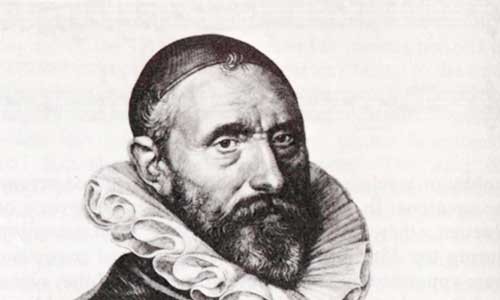The year 2021 is the 400th year of Sweelinck’s death. 2021 is therefore also referred to as the “Sweelinck year”. Sweelinck (1562 – 1621) is without a doubt the greatest composer in Dutch music history. We can safely see him as a national symbol. His image was on our paper money, but the famous Amsterdam Conservatory is also named after him.
Sweelinck probably learned keyboard playing on the organ and harpsichord from his father Pieter, who was organist of the Oude Kerk until his death in 1573. Pieter Swibbertszoon was succeeded by Cornelis Boskoop. It is assumed that Boskoop, following the death of Pieter Swibbertszoon, continued the musical education of Jan Pieterszoon. In any case, it has been documented that Sweelinck was ‘permanently’ attached to the Oude Kerk from 1580 (documents from the time before that have been lost). However, a later statement by his friend Cornelis Plemp shows that Sweelinck was already working as a permanent organist at the Oude Kerk in 1577, at the age of 15. He was a versatile musician and wrote madrigals, chansons, keyboard works and unparalleled psalm arrangements.
“From a prominent person from the past, to a source of inspiration for Noorlander in the present”
Sweelinck’s reputation in Amsterdam was very great. Because many young German musicians went to the Amsterdam master, Sweelinck exerted a great influence on the development of organ and harpsichord music, especially in northern Germany. His influence would even reach as far as the young Johann Sebastian Bach, who found inspiring role models in the organ masters Johann Adam Reincken from Hamburg and in Dieterich Buxtehude from Lübeck – they themselves pupils of Sweelinck’s former student Heinrich Scheidemann.
Sweelinck’s reputation also related to his expertise in organ building. In the course of his life he was asked several times to advise on and to carry out inspections of new or restored organs.


